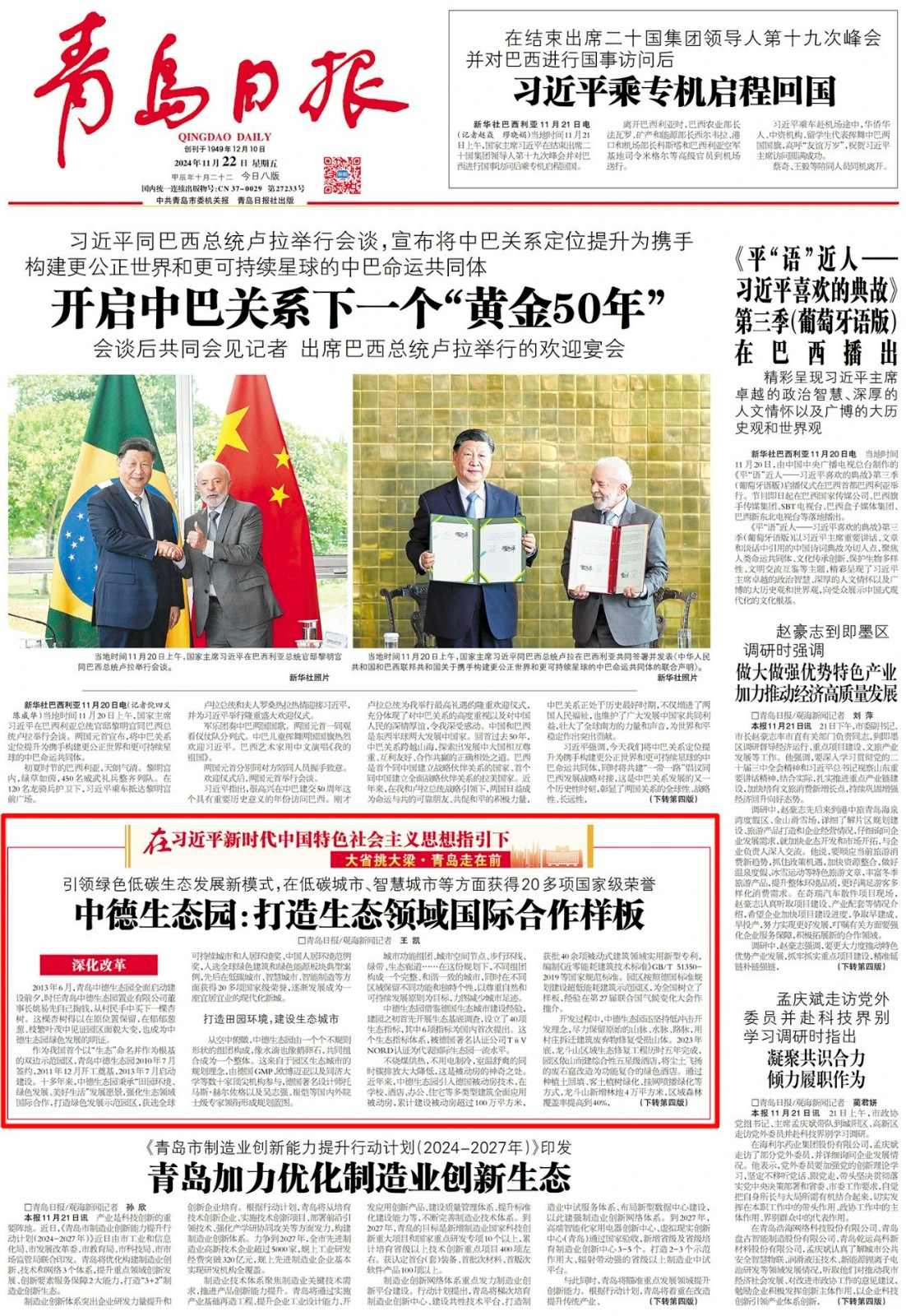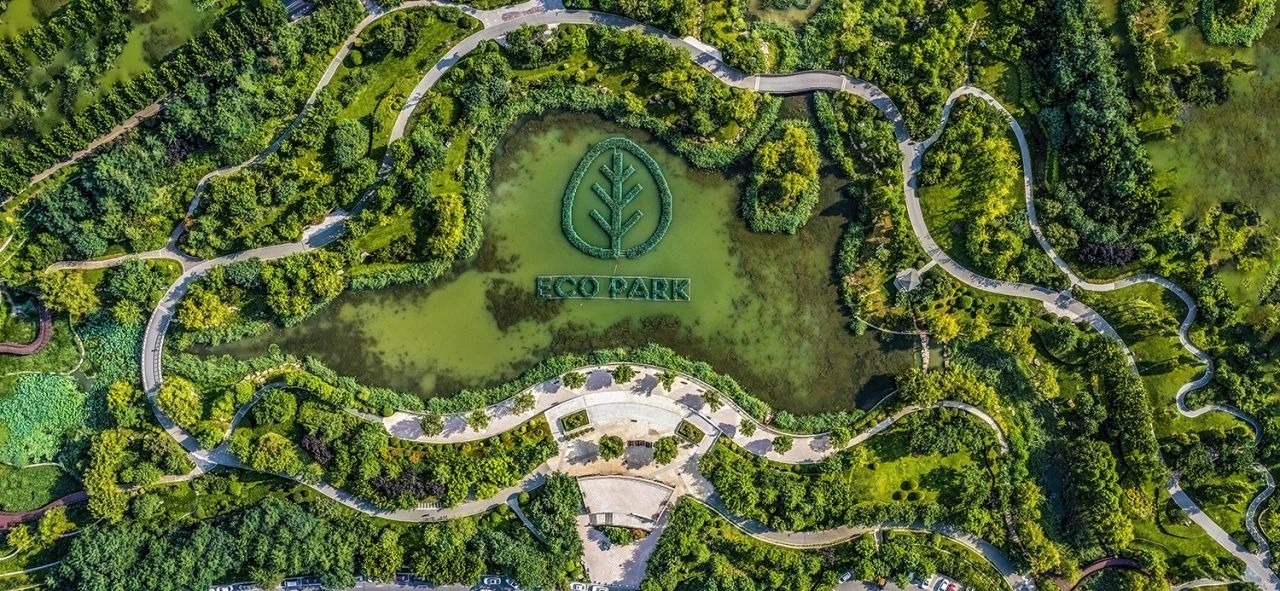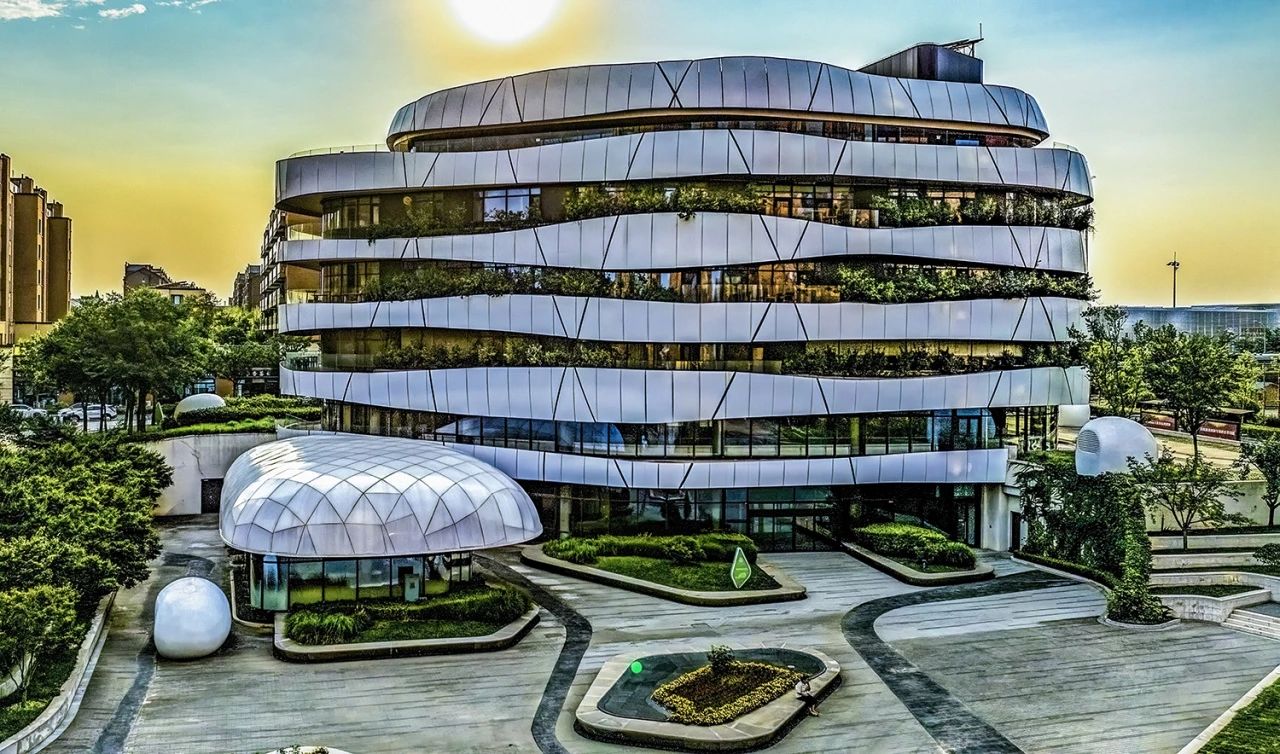In June 2013, on the eve of the full-scale construction of Qingdao Sino-German Ecopark, Yao Yixian, the then Chairman of Qingdao Sino-German Ecopark Real Estate Co.,Ltd. bought an apricot tree from the villagers at his own expense. Now the apricot tree has been preserved in its original location. As a clear evidence of the green development of Sino-German Ecopark, it has witnessed a great change of the appearance of the park in its lushness and foliage.
As China’s first bilateral demonstration park which was named after and rooted in “ecology”, Qingdao Sino-German Ecopark was signed for its establishment in July 2010, with its foundation stone laid in December 2011, and construction was commenced in July 2013. Over the past ten years, Qingdao Sino-German Ecopark has been adhering to the development vision of “Idyllic environment, green development and better life” in strengthening international cooperation in the field of ecology, and has created a green development demonstration park. It has won Global Sustainable Cities And Human Settlements Award, China Habitat Environment Example Prize, and has also been selected as a typical case in global green building and green energy sector. By winning more than 20 national-level honors in fields of low carbon city, smart city, intelligent manufacturing and etc., the park has gradually developed into a modern new community which is pleasant to live and work in.

01# Create idyllic environment and build an eco-city
Looking from the air, Qingdao Sino-German Ecopark consists of irregularly shaped clusters, like water drops or pebbles, which combine together to become a whole. This comes from the planning concept of eco-city in the park, which is participated by dozens of top organizations such as GMP, Obermeyer and Tongji University, and the planning blueprint is formed by domestic and foreign academician experts such as Thomas Herzog the famous German designer as well as Wu Zhiqiang, Cui Kai and etc.

Urban functional clusters, urban spatial nodes, pedestrian circuits, green belts, ecological corridors ...... Under this plan, different clusters form a complete and harmonious city, while retaining different functions and unique personalities in different areas, aiming at respecting the principles of nature and sustainable development and trying to lessen urban footprint.
Qingdao Sino-German Ecopark drew on Germany's experience in eco-city construction, and at the beginning of the construction of the park, it first carried out an ecological matrix survey and set up 40 ecological indicators, of which 6 indicators were proposed for the first time in China. This ecological index system was certified as representing the first-class level of international eco-parks by TÜV NORD, a famous German certification company.
The magic of passive house lies in keeping comfortable room temperature with carbon emissions largely reduced by heating withour burning coal and cooling without consuming electricity. In recent years, German passive house technology has been introduced by Sino-German Ecopark to be put into comprehensive use in many types of buildings such as schools, hotels, offices and residences. The cumulative construction of passive houses exceeds 1 million ㎡, with more than 40 utility model patents approved in the field of passive building and national norms and standards compiled such as “Technical Standard for Near-Zero Energy Building” GB/T 51350-2019. The park has set a model for the whole country by planning and establishing an ultra-low energy consumption building demonstration park in accordance with German standards, and its experience was promoted at the COP 27.
During the development process, Sino-German Ecopark has also adhered to the concept of low-impact development by making great effort to preserve original mountains, waters and roads. Even wastes from demolition and construction have been utilized to repair damaged area of mountains. By the end of 2023, the ecological restoration project of the Longdou Mountain area came to an end after five years, where the dusty abandoned grottos had been transformed into a five-star comprehensive green hotel to be built against the mountain. By means of planting soil backfill, greening through external soil planting, hanging net spraying greening, etc., 40,000 ㎡ of woodland was added in Longdou Mountain area, with its regional forest coverage rate increased to 40% and green space accounting for 60%, linked up associatedlly with surrounding urban forests of 400,000 ㎡.
In addition to a more pleasant ecological environment, urban function and city quality of Sino-German Ecopark has also been gradually improved day by day. In recent years, the park has built and opened 5 kindergartens, 1 elementary school, 1 nine-year school, 1 high school, 2 vocational schools and 1 university, 11 in total spanning from kindergarten to university providing high-quality educational resources. Public transportation is convenient with 1 subway line and 11 bus lines that have already come under operation within the park. In terms of matched business and public facilities, Sino-German Ecopark Future City commercial complex project has passed the main acceptance, which is expected to be completed construction in the second half of 2025. Citizen’s Sports Activity Center project, which has been planned by German Football Asian Base, has been included in 2025 investment and new construction plan of Qingdao Free Trade Zone. With related land allocation procedures completed and preliminary planning and design program finished, the next step will be to actively promote the commencement of the formalities for processing and The next step is to actively promote the start of the formalities and project construction.
02# Strengthen international cooperation and focus on green development
Qingdao Sino-German Ecopark is the first ecological cooperation demonstration project between China and Germany, and is an important gateway and platform for Qingdao’s opening-up and cooperation. Under the ecological-based planning and construction, the park has attracted more and more German and foreign-funded projects with the same concept to settle down.

At present, Sino-German Ecopark settled in the German-speaking area enterprises exceeded 40, including the world's top 500 Siemens, Continental AG, etc., the park’s first German-funded enterprises - Siempelkamp, Germany’s invisible champion enterprises ElringKlinger AG, Sophienhanma, etc., and the current focus of the reserve projects in the talks amounted to more than a hundred. Sino-German Ecopark party committee member, Deputy Director of the Administrative Committee Zhang Yunqing introduced, only since 2024, the park has been Qingdao Sisa International Trade Co., Ltd, Siempelkamp Trade (Qingdao) Co., Ltd, Kluber International Trade (Qingdao) Co.
When it comes to foreign-funded enterprises, Sino-German Ecopark has accumulated nearly 200 foreign-funded enterprises, involving 31 countries and regions. 2021, the park introduced Qingdao’s first Fortune 500 headquarter project - Japan's ORIX industrial operation headquarter project; on June 9, 2023, the 60-million-euro BWTHAIER On June 9, 2023, the intelligent water purification factory of BWT Haier with a total investment of 60 million euros was put into production, which is one of the largest projects invested by German-speaking enterprises in Qingdao in recent years.
In the Sino-German Ecopark, green development and ecological development have become the consensus of enterprises. For example, the park Haier central air conditioning project to establish intelligent energy data interconnection control center, each line body, each process for energy consumption monitoring; the establishment of a single unit of energy consumption control indicators, production, transmission, distribution and use of the whole chain of centralized dynamic monitoring and digital management, reduce the important energy medium dispersal, improve and optimize the energy balance. Through the air compressor waste heat recovery, pump room motor frequency conversion, gas triple-supply system construction, energy ladder utilization, energy utilization efficiency of more than 80%, annual carbon reduction of 0.65 million tons. In addition, the plant implements green technologies such as thermal insulation and heat preservation, highly reflective roof panels, natural circulation air supply, and cold recovery and cooling, realizing a 32% reduction in energy consumption, a 21% reduction in water consumption, and a 19% reduction in carbon.
At present, Sino-German Ecopark is anchoring the three leading industries of Smart Home, integrated circuits and gene technology to build an important growth pole for advanced manufacturing in Qingdao and even in the province.
In terms of Smart Home, the park has settled 9 machine production projects, 13 supporting projects. A total investment of 65 million U.S. dollars of Austria BWT project, a total investment of 40 million U.S. dollars of Germany Diehl and other projects put into operation, a total investment of 200 million U.S. dollars of Israel Strauss water purification project main construction, investment of 3 billion yuan of water networking ecological intelligent manufacturing base project for trial production, these world-class water ecological industry projects in China-Germany Eco-Park agglomeration, will work together to build the world's leading water ecological industry Intelligent manufacturing new high ground. In addition, the park has built 11 intelligent interconnected factories, including Haier central air conditioning, refrigerator interconnected factories, drum washing machine interconnected factories have been selected as “lighthouse factories”, helping Qingdao’s advantageous intelligent home appliance industry to a new level.
In terms of integrated circuit, the park is fully committed to the construction of Qingdao Integrated Circuit Industrial Park, since this year, there have been Beslan Semiconductor, Kexin Microelectronics, Keda Group, CMC Fund and other projects to realize the signing of the contract; Qingdao Integrated Circuit Advanced Equipment Park, North Huachuang, Ruping electronic materials, such as the start of construction, opening; the first phase of the trial production of the Guangzhou Steel bulk gas station, the Shengke nano-end sealing test project put into production. Up to now, the park has gathered 40 projects in the upstream and downstream of the IC industry chain, covering design, manufacturing, packaging and testing, materials, equipment, modules, platforms, funds and other industry sectors, and has gathered more than 5,000 related professionals.
In terms of Gene technology, marine biology gene editing and breeding center project of a total investment of 1.1 billion RMB started construction, BGI Health Medical Industrial Park project with a total investment of 1.58 billion RMB was completed construction and put into use, the first CRO of gene therapy and mRNA drugs of Shandong Province was established and put into operation. With the above projects, the park has initially formed an integrated layout of "Production, education and research" in marine scientific research, genomics, high-end equipment, biological breeding, and people's livelihood and health.

